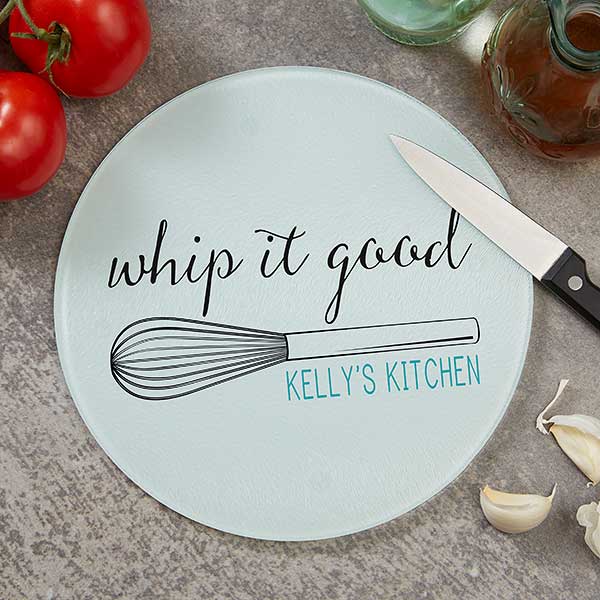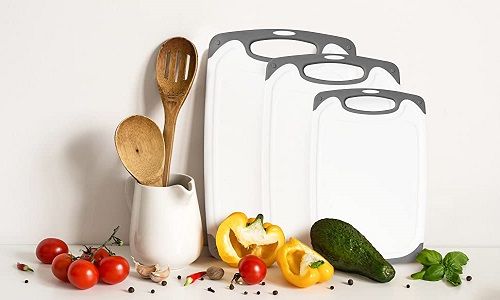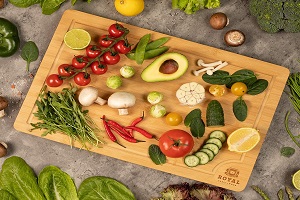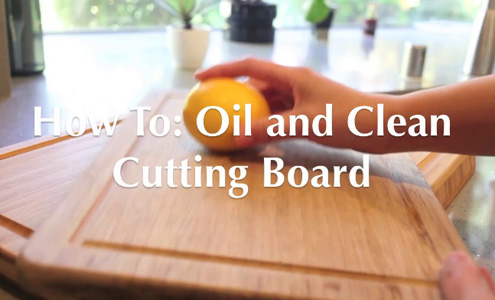Are Glass Cutting Boards Good? Expert Tips
When it comes to kitchen essentials, cutting boards play a vital role in food preparation. Among the various materials used for cutting boards, glass cutting boards have gained popularity due to their sleek and modern appearance.
But the common question is Are Glass Cutting Boards Good to use?
In this article, we will explore the advantages and disadvantages of using glass cutting boards, their hygienic properties, safety concerns, and how they compare to other materials. Whether you’re a seasoned chef or a home cook, understanding the pros and cons of glass cutting boards can help you make an informed decision for your culinary needs.
Are Glass Cutting Boards Good to Use?
Absolutely! Glass cutting boards can be a great option for certain kitchen tasks and have their advantages:
- Hygienic: Glass cutting boards are non-porous, which means they won’t absorb juices, odors, or bacteria from the food you’re cutting. This makes them easy to clean and more hygienic compared to some other materials.
- Durability: Glass cutting boards are generally quite durable and can withstand heavy use without showing signs of wear and tear. They won’t develop deep grooves or scratches easily, ensuring a smooth and safe surface for cutting.
- Easy to Clean: Cleaning glass cutting boards is a breeze as they are dishwasher-safe and can also be easily wiped down with soap and water. Their smooth surface leaves no room for food particles to get trapped, promoting better hygiene.
- Visual Appeal: Glass cutting boards often have an elegant and modern appearance, making them a great addition to your kitchen decor. They come in various designs, patterns, and colors, allowing you to choose one that suits your style.
- Multi-functional: Besides being used as a cutting surface, glass boards can double as serving platters or presentation trays for cheese, fruits, and other snacks. Their stylish look can add to the appeal of your culinary creations.
However, it’s important to note that there are also some considerations to keep in mind:
- Knife-Friendly: Glass is a harder material than wood or plastic, and repeated use of sharp knives on glass cutting boards can dull the blades faster. To mitigate this, it’s recommended to use high-quality knives that can better withstand the hardness of the glass.
- Slippery Surface: Glass cutting boards can be more slippery than other materials, so it’s essential to place a damp towel or silicone mat underneath to prevent them from sliding around during use.
- Impact Sensitivity: Although glass is durable, it can still crack or shatter if subjected to heavy impact or dropped onto a hard surface.
Ultimately, if you handle them with care and take proper precautions, glass cutting boards can be a practical and aesthetically pleasing addition to your kitchen arsenal. They offer a hygienic, easy-to-clean surface that can make food preparation more enjoyable.
Advantages of Glass Cutting Boards
Glass cutting boards offer several benefits that make them appealing to many users. One of the most significant advantages is their durability and longevity. Unlike traditional wooden boards that may develop cracks or plastic boards that can warp over time, glass cutting boards remain relatively stable and resilient, with proper care.
Another compelling feature of glass cutting boards is their hygienic properties. The non-porous surface prevents the absorption of liquids, reducing the likelihood of bacterial growth and food contamination. Additionally, glass is easy to clean and maintain, making it a convenient option for busy kitchens.
Disadvantages of Glass Cutting Boards
While glass cutting boards have their merits, they also come with some drawbacks. One concern is their impact on knives. Glass is a hard material that can be tough on knife blades, leading to quicker dulling of edges. To mitigate this issue, it’s essential to use high-quality, sharp knives and avoid excessive force during cutting.
Furthermore, the smooth surface of glass can be slippery, posing a safety hazard, especially when cutting moist or greasy ingredients. Users need to exercise caution to prevent accidents and potential injuries while using glass cutting boards.

Safety Concerns
One of the primary safety concerns associated with glass cutting boards is the risk of shattering. Although tempered glass is less likely to break, it can still happen if subjected to extreme stress or temperature changes. To minimize this risk, users should avoid exposing glass cutting boards to sudden temperature variations, such as placing a hot pan directly on the board or placing it in a freezer.
Taking proper precautions can significantly reduce the chances of accidents. For safety-conscious users, considering alternative materials like wood or plastic might be a more suitable option.
Are Glass Cutting Boards Hygienic?
Glass cutting boards are known for their hygienic properties. The non-porous surface prevents liquids, juices, and food particles from seeping into the material, reducing the risk of bacterial growth. However, it’s still essential to follow proper food safety practices, such as washing the board thoroughly after each use and using separate boards for different types of ingredients to avoid cross-contamination.
Preserving Your Glass Cutting Board
To ensure the longevity of your glass cutting board, proper handling and maintenance are crucial. Avoid dropping or banging the board, as this can lead to cracks or chips. It’s also advisable to avoid exposing the board to extreme temperatures, such as placing it in the oven or microwave.
To prevent scratches and stains, it’s best to use non-abrasive cleaners and soft sponges when cleaning the board. Regularly inspect the board for any signs of damage or wear and replace it if necessary to maintain a safe and hygienic food preparation surface.
Glass Cutting Boards vs. Other Materials
When choosing a cutting board, it’s essential to consider other material options available in the market. Wooden cutting boards, for instance, are gentle on knives and provide a rustic charm to the kitchen. Plastic cutting boards are affordable and lightweight, making them portable and easy to store. Bamboo cutting boards are eco-friendly and boast natural antimicrobial properties.
Each material has its unique characteristics and benefits, so selecting the right cutting board depends on individual preferences and needs.
Aesthetics and Design
Beyond functionality, glass cutting boards offer aesthetic appeal to any kitchen space. Their sleek and modern design can complement various kitchen styles, adding a touch of sophistication to food preparation. Additionally, glass cutting boards often come with customization options, allowing users to personalize them with patterns, images, or colors.
Glass Cutting Boards for Specific Purposes
Glass cutting boards can serve more than just a functional purpose. When hosting gatherings or special events, glass cutting boards can double as elegant serving platters for cheeses, fruits, and appetizers. They add a touch of elegance to any dining table, making them a versatile addition to your kitchen arsenal.
Environmental Impact
Concerns about sustainability and the environmental impact of products have become increasingly relevant. Glass cutting boards, made from recyclable materials, are a more eco-friendly choice compared to some other types of cutting boards. Additionally, some manufacturers adopt sustainable practices in their production processes, further reducing the ecological footprint of these products.
User Reviews and Experiences
Before making a purchase decision, it’s always beneficial to hear from other users. Online reviews and testimonials can offer insights into the experiences of those who have used glass cutting boards. By evaluating different perspectives, potential buyers can gain a well-rounded view of the product’s performance and suitability for their needs.
How to Choose the Right Glass Cutting Board
Choosing the right glass cutting board involves considering several factors. First, the thickness and size of the board can affect its durability and usability. Thicker boards tend to be more robust and less prone to breaking, while larger boards offer ample space for cutting and slicing.
Additionally, some glass cutting boards come with special features like non-slip pads or raised edges to provide better stability and prevent accidents. Evaluating
Conclusion:
Glass cutting boards can be a valuable and attractive addition to any kitchen. Their non-porous surface makes them hygienic and easy to clean, providing a safe environment for food preparation. Additionally, their durability ensures a long-lasting cutting surface that won’t show signs of wear easily. The visual appeal of glass cutting boards adds a touch of elegance to your culinary space and can also serve as versatile serving platters.
However, it’s important to be mindful of their impact on knife blades and take precautions to prevent slipping during use. By choosing high-quality knives and using a damp towel or silicone mat for stability, these concerns can be effectively addressed.
When used responsibly and with proper care, glass cutting boards can be a positive choice, enhancing both the functionality and aesthetics of your kitchen. So, whether you’re slicing, dicing, or presenting your culinary creations, a well-maintained glass cutting board can be an excellent tool to make your cooking experience more enjoyable and efficient.



